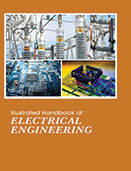Engineering and Technology

Electricity is one of those discoveries that have changed the daily life of everybody on the planet. Electricity is the key component to modern technology and without it most of the things that we use every day simply could not work, and would never have been created. Our mobile phones, our computers, the Internet, our heating systems, our televisions, and our light bulbs - nearly everything in the home would be completely different. There would be completely different systems put in place in the home to ensure that we can remain warm, and to ensure that we can live properly every day. In electrical engineering, we are often interested in communicating or transferring energy from one point to another. To do this requires an interconnection of electrical devices. Such interconnection is referred to as an electric circuit, and each component of the circuit is known as an element.
Illustrated Handbook of Electrical Engineering provides a solid theoretical and practical perspective on Data Communication and Computer Networks.
From its beginnings in the late nineteenth century, electrical engineering has blossomed from focusing on electrical circuits for power, telegraphy and telephony to focusing on a much broader range of disciplines. However, the underlying themes are relevant today: Power creation and transmission and information have been the underlying themes of electrical engineering for a century and a half.
This Illustrated Handbook of Electrical Engineering attempts to concentrates on: the representation, manipulation, transmission, and reception of information by electrical means. This book describes what information is, how engineers quantify information, and how electrical signals represent information.
Illustrated with detailed equations, helpful drawings, and easy-to-understand tables, this book is intended to enlighten and refresh knowledge of the practicing engineer or to help educate engineering students.